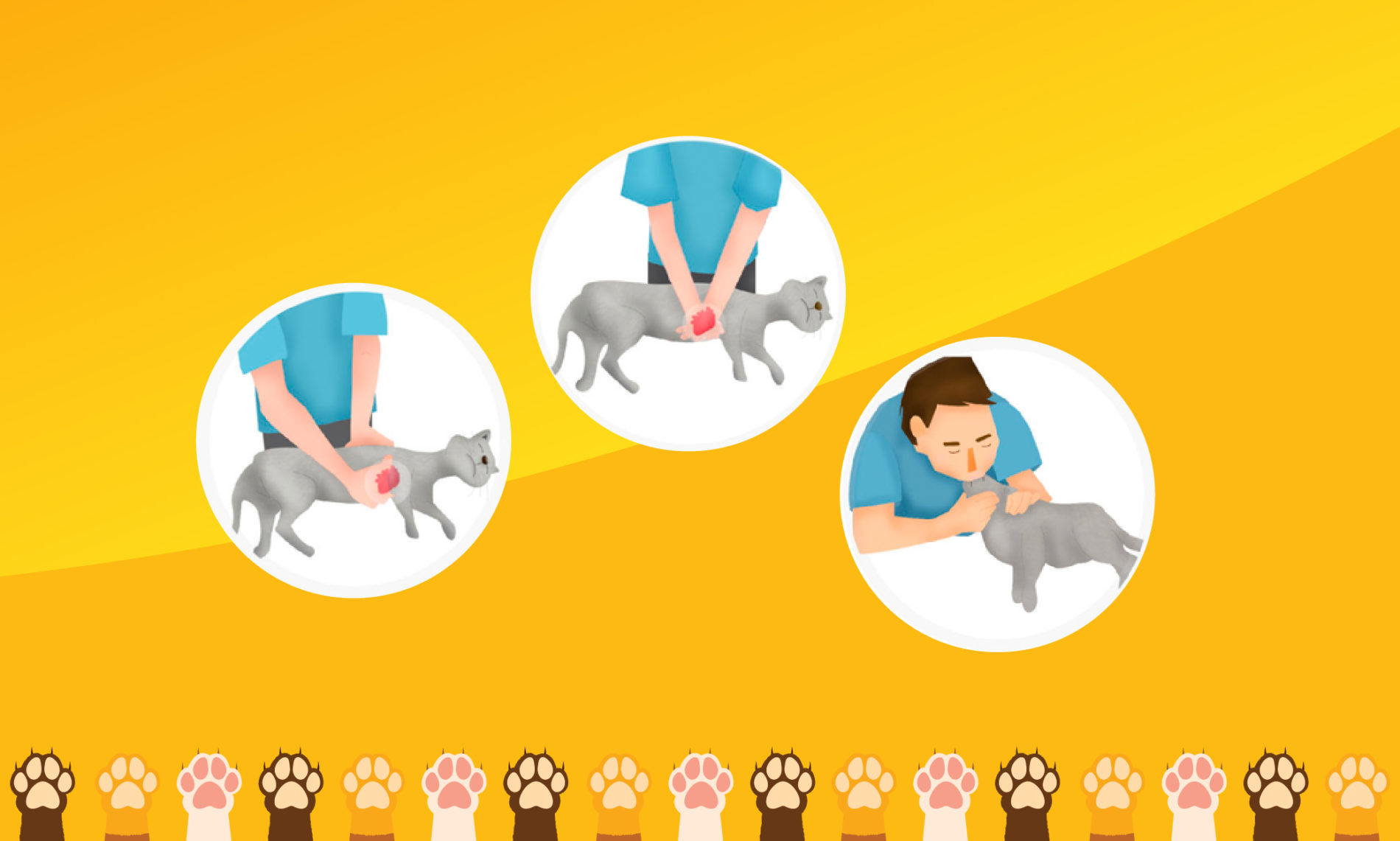Save a Life: Learn Animal CPR
For the Pet Owner
CIRCULATION
This is the final step of CPR, and should only be started after the A-airway and B-breathing steps have been completed.
- Make sure that there are no major (pooling/spurting blood) points of bleeding. Control as necessary by applying pressure with your hand.
- Check out a pulse in the groin (check carefully on a conscious dog or cat)
- Lay the animal on the right side
- Locate your hands where the left elbow touches the chest, approximately the middle of the rib-cage (for cats, use 1 hand in a squeezing motion).
- Compess the chest 15 times, followed by 2 breaths (3 compressions every 2 seconds)
- Compression:
1/2” – small dogs & cats
1” – medium dogs
1.5” – large dogs
- Compression:
- Repeat as necessary

During an emergency, it is very important that you remain calm. Animals can sense your unease, but cannot understand what is happening – and you can’t tell them.
Your body language is very important. Be calm, yet deliberate in your actions.
When you determine that you either have corrected the life-threatening problem, or are unable to stabilise the animal, you should transport to the nearest emergency veterinary hospital. Notify your emergency clinic that you are coming in with a dog/cat with respiratory arrest, a foreign object airway obstruction, and/or cardiac arrest.
Give them the following information via phone if possible:
- Your Name
- Your Estimated Time of Arrival
- Steps taken (CPR, removal of object…)
- Breed/Size (dog/cat)
- If a foreign object is in the airway, what the suspected object is
- If a poison or medication has been eaten
- Mechanism of injury (hit by car…)
- Relevant Medical History (Diabetes…)

